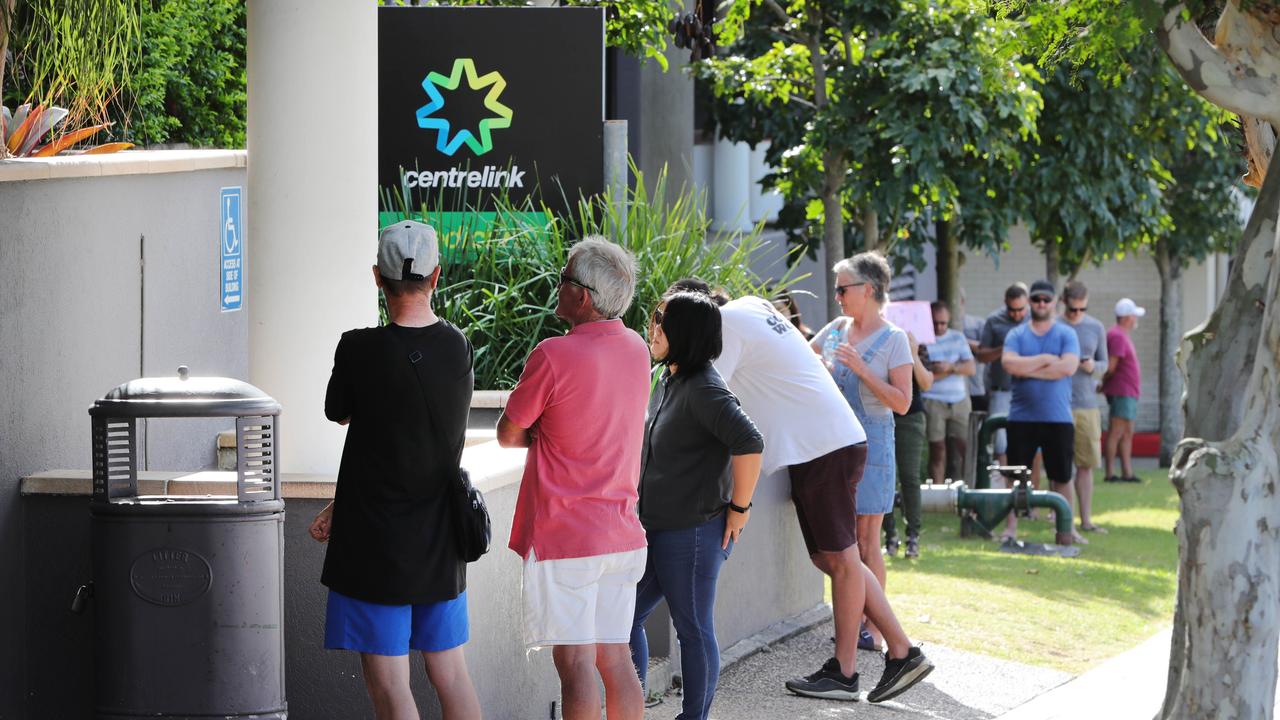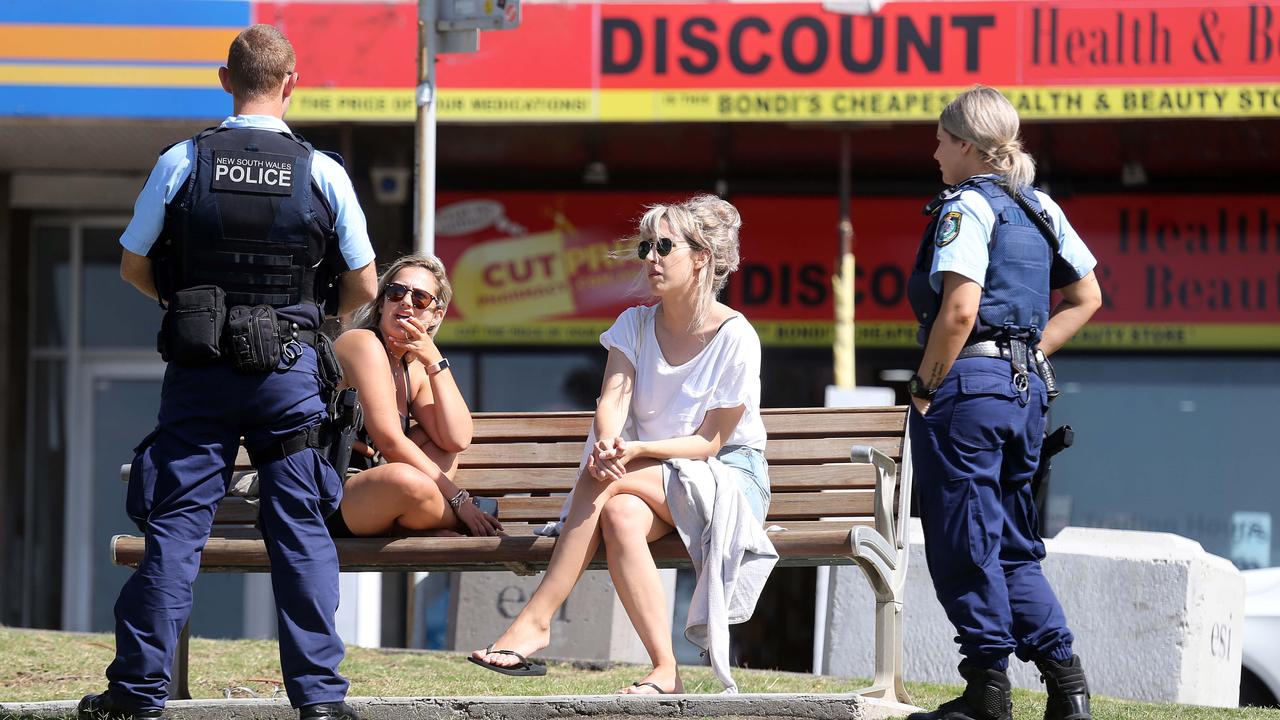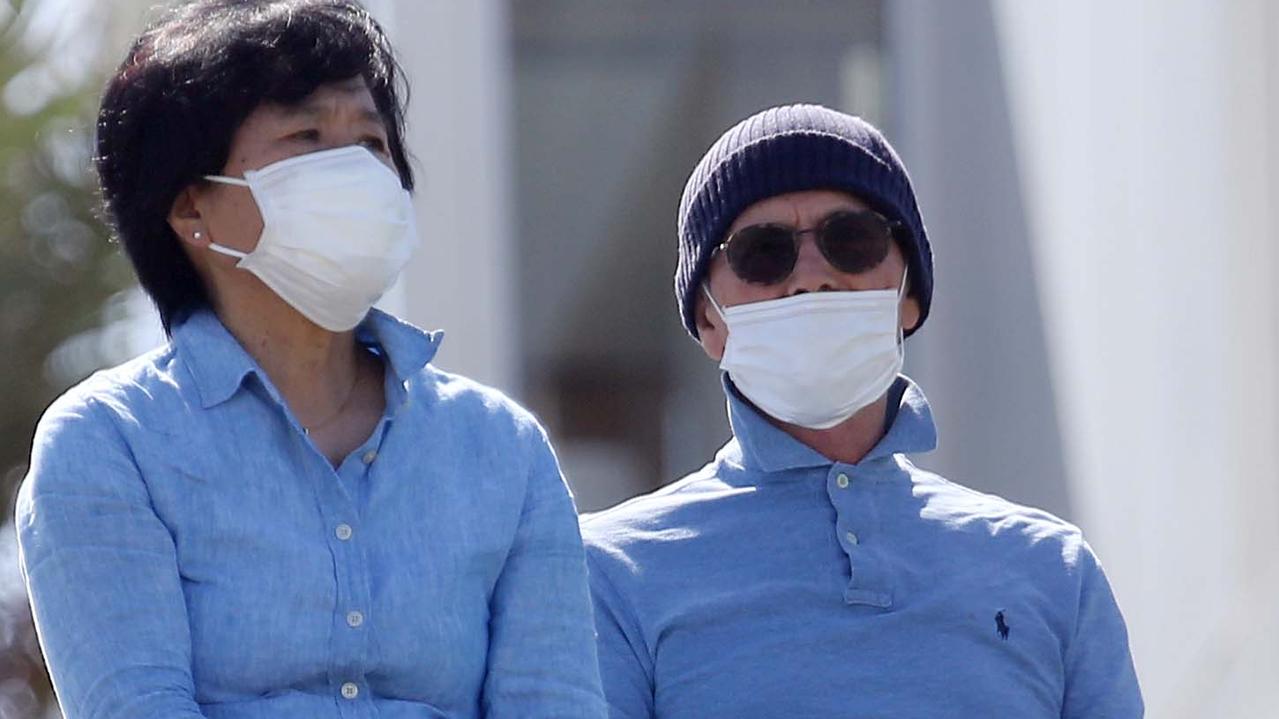Coronavirus: The questions that can’t be answered about herd immunity
Australia faces a tough decision about how to end the coronavirus epidemic and one “offensive” option is raising concerns.

Australia is looking for its exit strategy from tough restrictions introduced to stop the spread of COVID-19 but one controversial option is severely dividing opinions.
The country can’t stay in lockdown forever, and in order for Australian life to return to normal, there are only two ways that the virus can be defeated.
Either a vaccine is found or Australia develops “herd immunity” which means about 60 per cent of the population, or 15 million people, need to be infected.
A story news.com.au ran on Tuesday about three options to end the epidemic sparked debate and questions about each of the paths.
Firstly, Australia could still try to achieve a full elimination of the virus but this would involve even stricter lockdown restrictions being enforced for between six weeks to three months.
A second option to “squash the curve” would involve social distancing restrictions until a vaccine is developed, which could be 18 months or longer away.
The third option would involve allowing people to slowly get infected until about 60 per cent of the population had the coronavirus, at which point there would be “herd immunity”. This is likely the quickest way for Australians to return to normal life.
The idea of allowing people to get infected deliberately has been described as “offensive” and akin to murder.
However, many do support the option.
A news.com.au online poll on the three options got more than 50,000 responses, and showed about 45 per cent supported herd immunity, while 38 per cent thought elimination was a better plan, and 17 per cent believed authorities should continue current restrictions until a vaccine was found.
Overall, more people seem to favour a more conservative approach but the economic cost of strict lockdowns may yet force the government’s hand.
RELATED: Follow the latest coronavirus updates
RELATED: ‘Wicked’ decision Australia needs to make on ending epidemic
RELATED: Expert warns of ‘second-round’ economic impacts

On Tuesday, Chief Medical Officer Brendan Murphy said Australia was not pursuing a path of herd immunity. “We are pursuing a path of control and suppression,” he told reporters.
But Prof Murphy said the Australian Health Protection Principal Committee (AHPPC) was considering many scenarios and would put forward options to the National Cabinet.
“There is no clear path,” he said. “Unlike pandemic influenza, where the strategy was to control and contain until the vaccine came, because we knew the vaccine would come, we don’t know if and when a vaccine will come with this virus.”
Prime Minister Scott Morrison also noted the government’s current economic lifelines, including a $320 billion rescue package to support the unemployment and to keep people in jobs, had a “finite life”.
Associate Professor Hassan Vally of LaTrobe University told news.com.au there were some serious ethical questions around allowing people to get infected deliberately as part of the herd immunity option.
“It’s really important to know that when people talk about herd immunity, it’s usually in the context of a vaccine,” he said.
Normally herd immunity is achieved by vaccinating people, not through deliberate infection.
In the case of COVID-19, experts have suggested one option to build up immunity within the community, could involve allowing young people to return to work because they have a low chance of getting a severe form of the disease.
But Prof Vally said even though the risk was low, young people had died from the coronavirus and there was no guarantee they would be safe.
“This is an ethical issue, young people are going to die,” he said.
RELATED: Experts slam calls for lockdown to be reversed

There was another practical issue of how to keep the population separate so young people did not infect older people, who were more likely to die from the virus.
“Everyone is looking for a really simple solution because we don’t want to be locked up,” he said.
“It may sound attractive but we have to be careful not to be taken in by overly simple solutions to this.”
All the options Australia faces have limitations and have raised many questions about how feasible they are.
Here are some of the issues that need to be resolved.
IS A VACCINE POSSIBLE?
Many people are pinning their hopes on a vaccine being developed so life can get back to normal.
However, some have pointed out development of a vaccine is not a certainty.
Prof Vally said there was no reason why, with the amount of effort or resources being putting into developing a vaccine, that it would not be possible, however, there was also no guarantees that this could be done, or that it could be done within 12 months.
Prof Vally pointed to the example of SARS, another coronavirus that researchers never managed to developed a vaccine for, although this was partly because the disease largely disappeared and so it was no longer needed.
“They had a few problems with people having adverse reactions to the vaccine,” Prof Vally said.
“It’s probably to do with the role that the immune response plays in response to SARS and potentially COVID-19.
“But there’s not technological or immunological reason why this is not possible.
“Time is the issue really, everyone wants a vaccine in record time and it’s not easy to develop vaccines, and it’s not easy to develop vaccines with safety and efficacy.”
RELATED: Vaccine trials begin as hydroxychloroquine deal struck

HOW DOES HERD IMMUNITY ACTUALLY WORK?
In order to survive, viruses need to be able to spread so if you can stop the disease from infecting others you can basically kill the virus.
Viruses can’t spread to people who are immune and people can develop immunity either by being infected and then recovering, or through getting a vaccine.
“If the virus can’t find other people to infect, the virus dies,” Prof Vally said.
Herd immunity uses a simple mathematical calculation based on how infectious the disease is, to work out what proportion of the community needs to be immune to stop the virus from spreading.
The infectiousness of diseases is calculated as a R0 number. In the case of COVID-19, Prof Vally said scientists estimate the R0 is somewhere between 2-3.
They have worked out that to stop the spread of the virus, an estimated 50 to 60 per cent of the population would need to be immune to the disease.
However, this week Chief Medical Officer Brendan Murphy noted that the calculations were based on the behaviour of other viruses and it wasn’t clear yet what the exact percentage was.
“There’s no community in the world that has very high immunity as yet,” he said.
WHAT IF PEOPLE DON’T BECOME IMMUNE TO COVID-19?
Some have pointed out that there’s no guarantee people will become immune to the coronavirus even after they become infected and recover. Indeed there have been cases where people appear to have got COVID-19 twice.
However, reports suggest it’s likely these patients tested positive twice because the tests may not have picked up their previous lingering infection.
Prof Vally said he didn’t think there would be any reason to expect people wouldn’t develop immunity.
“We know this virus is very similar to SARS and we know about the coronavirus family and how immunity is developed to those viruses,” he said. “So I think there’s no reason to expect that people won’t develop immunity.”
However, he said there were probably a lot of unanswered questions about how long the immunity would last.
“It would certainly last a while, but whether that is as short as a year, or longer than that, we don’t know,” he said.
Prof Vally said it was possible COVID-19 could become an endemic disease like influenza that would always be in the population.
“It could become another disease we live with,” he said.
He said viruses were also known to mutate to become less deadly, so they could spread more easily and survive.
“It’s an evolutionary feature of this virus so it can live in the population and survive better,” he said. “So it’s definitely one possibility that it will be with us forever.”
COULD THERE BE LONG-TERM HEALTH PROBLEMS?
Opponents to herd immunity also point out that it’s possible for those who are infected to face unknown long-term impacts, and Prof Vally confirmed this was possible.
“We did not know this virus existed three to four months ago, we don’t know anything about its long term effects,” he said.
“I do think it’s a pretty serious ethical issue to let people be exposed to it, and not be really sure what the long term effects are going to be … it’s not even clear what the short term effects are.”
In the case of SARS, most patients did recover fully but a small percentage had long-term effects including depression, anxiety, cough, shortness of breath, chronic lung disease or kidney disease.
“This is a different virus and has a lot of characteristics that are different to SARS but would you be happy to take that risk without knowing what the consequences are?” Prof Vally asked. “I think it’s a big decision.”
WHY IS IT SO HARD TO ELIMINATE?
One option that has the support of many is to eliminate the disease in Australia but many experts have noted that this is very difficult.
“You have to find every single case,” Prof Vally said. “Whether they are symptomatic or asymptomatic. It’s just an extraordinary effort.”
If the coronavirus continued to be spread overseas, very strict measures would need to be in place in Australia to make sure it was not reintroduced into the country.
“This may involve severe restrictions,” he said.
The Morrison Government has already indicated that any attempt to eliminate the virus may come at too high an economic cost and would require “aggressive” border controls.
ARE THERE OTHER OPTIONS?
Grattan Institute chief executive officer John Daley also described herd immunity as a very risky strategy and believes it may be possible to lift restrictions safely if other measures are brought in.
He believes authorities could suppress economic activity enough so the growth rate of the virus remains at one or below one. This means for every person who has the disease, they only pass it on to one other person.
Mr Daley said in a webinar on Thursday that Australia looks to have achieved this while keeping open construction sites, public transport and many child care facilities.
“We can certainly essentially do what we’re doing at the moment for the indefinite future and we won’t see a big explosion in cases,” he said.
“Indeed it’s probable that we could increase the amount of economic activity somewhat, and not see an infection rate over one.”
Mr Daley believes changes to community behaviour will also keep infections down as people are more careful about washing hands and not greeting each other with a kiss or handshake.
However, he acknowledged there was no certainty around what activities Australia could relax restrictions on and still keep its infection rate down.

Some measures that could help ease restrictions include mass testing, and effective tracking and tracing of potentially infected people.
Mr Daley said if every worker could be tested every day, this could allow many to return to work. The benefits to this may well outweigh the cost.
However, it was not possible for Australia to do this at the moment because it did not have enough tests and it was unlikely the industry could be scaled up quickly.
It was also unclear what kind of systems Australians and authorities would be willing to put in place to track and trace potentially infected people.
Mr Daley said these two measures won’t allow a 100 per cent economic snapback but it would better than if infection rates were kept down to one.




